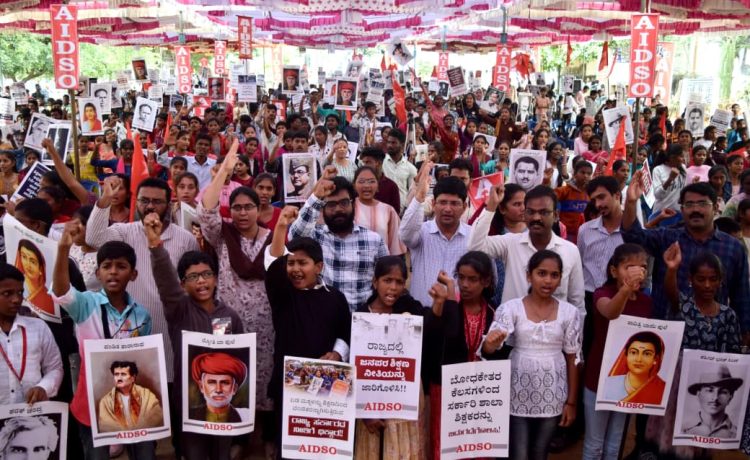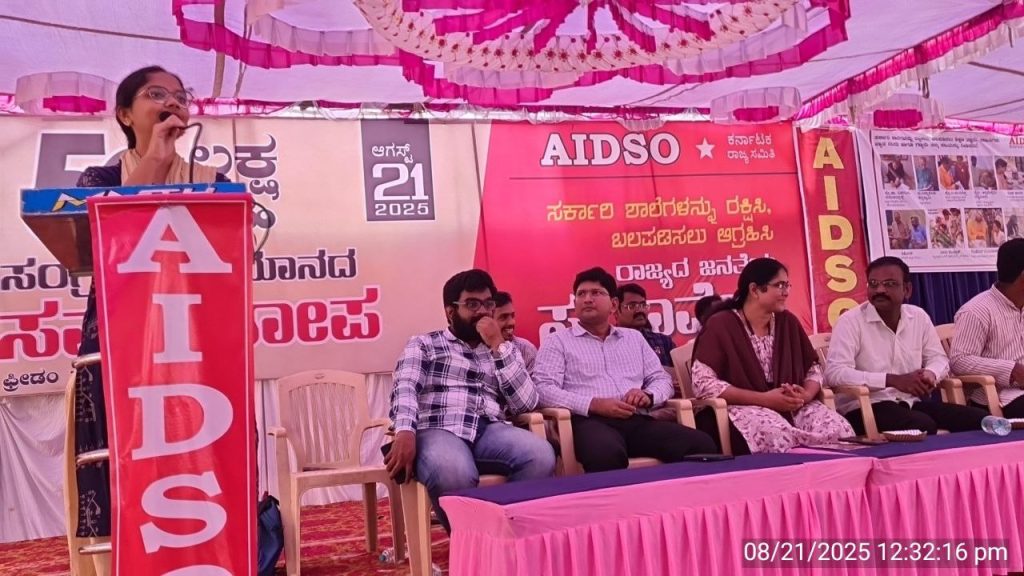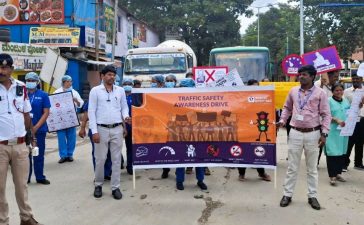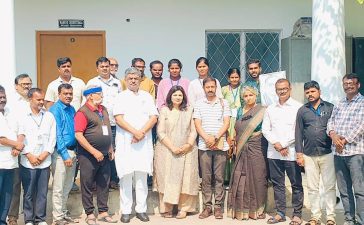“A Conspiracy to Shirk Responsibility”: Students Submit 50 Lakh Signatures Against School Closures in Karnataka
Bengaluru – In an unprecedented display of youth activism, the All India Democratic Students’ Organisation (AIDSO) on Thursday delivered a powerful rebuke to the Karnataka government, submitting a mammoth petition of 50 lakh signatures demanding a halt to the proposed closure of 6,200 state-run schools. The culmination of a six-month statewide campaign at Freedom Park saw thousands of students, activists, and academics unite to decry the systematic neglect of public education, framing the government’s consolidation policy as an assault on the rights of the poor.
The event, inaugurated by retired Supreme Court Justice and former Lokayukta Justice N. Santosh Hegde, transcended a mere protest. It served as a stark audit of the crumbling infrastructure, chronic teacher shortages, and a deepening crisis in Karnataka’s education system. Yet, it also morphed into a cautious victory lap. Leaders announced that sustained pressure from their movement had forced Education Minister Madhu Bangarappa to declare in the legislative assembly that no schools would be shut down. However, the mood was one of vigilant determination rather than celebration, with speakers vowing to continue their agitation until the verbal assurance is formalized in policy.
A Conspiracy Against the Poor: Academics Decry Policy Shift
The intellectual heft of the movement was underscored by scathing critiques from eminent academics. Prof. A. Murigeppa, former Vice-Chancellor of Hampi Kannada University, launched a direct attack on the government’s intent. “The government is favoring private schools and offloading its burden by closing government schools. This is ruining the future of children from poor families. This is a conspiracy by the government to shirk its responsibility,” he stated, voicing a sentiment that resonated through the crowd.
He dismantled the government’s primary justification—low enrollment—arguing that it creates a vicious cycle. “If government schools are closed on the pretext of low enrollment, it will be impossible for the children of ordinary people—who struggle to even afford one meal a day—to attend private schools,” he said, highlighting the socio-economic barrier. He redefined the government’s duty, insisting it must not close schools but instead resolve the core issues of teacher vacancies and infrastructure decay to naturally boost enrollment.
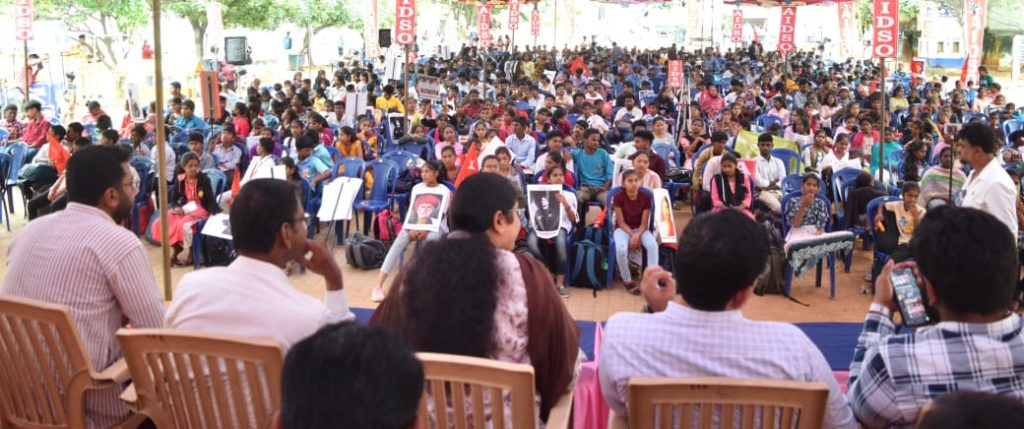
Sabotage and Solidarity: Students Overcome Hurdles
The path to Freedom Park was fraught with obstacles, as detailed by AIDSO’s State Secretary, Ajay Kamath. He alleged active efforts by authorities to suppress the protest, claiming, “In many places, teachers were used to prevent students from coming to the event. Sudden tests were conducted in many schools and colleges, and parents were intimidated to prevent them from sending their children.” He framed the students’ successful mobilization as an act of defiance, proclaiming that those who reached the venue “overcame all these obstacles… proving they are the true followers of Netaji and Bhagat Singh.”
This narrative of resistance was woven into a broader historical tapestry. Kamath invoked the legacy of Indian educational reformers like Jyotiba Phule, Savitribai Phule, and Ishwar Chandra Vidyasagar, stating their vision was the “inspiration and strength of this movement.” He called for a continued struggle to strengthen government schools as the “true tribute to these great personalities.”
Contact For Media Updates: +91-93531 21474 [WhatsApp] | indianowme@gmail.com
From Grassroots Grievances to a National Movement
The rally was not just about policy; it was about people. Personal testimonies gave a human face to the statistical crisis. Vikram, a 9th-standard student from Yadgir, shared a ground-level perspective of neglect. “We have come here to save government schools… The government schools have been neglected,” he said. His concerns were elemental: “There are inadequate bathroom facilities… Children have to go outside for certain activities, which causes concern among parents about their safety.” These concerns were validated by AIDSO’s Gangaraju, who pointed to a systemic failure: “There are around 61 thousand vacancies of teachers which need to be filled by the Government.”
The movement’s resonance extended beyond Karnataka’s borders. Sebastian, AIDSO Tamil Nadu State President, congratulated the Karnataka unit, declaring their fight “a model for the country.” He expressed anger that governments are “spreading unscientific thoughts that hinder scientific thinking in education and suppress the questioning mindset of students,” framing the school closure issue as part of a larger battle against “ignorance.”
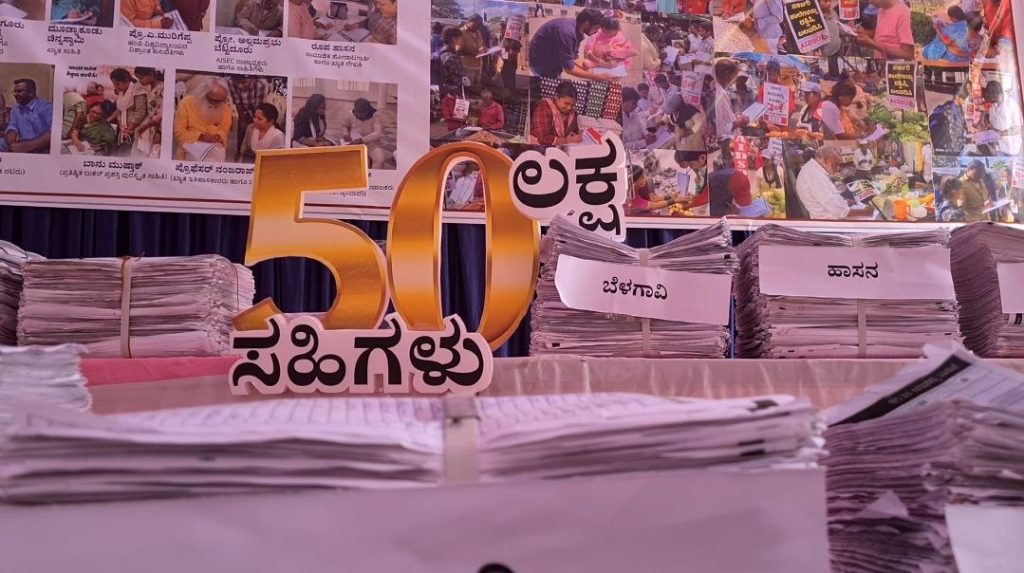
A Cautious Victory and the Road Ahead
The political impact of the campaign was undeniable. AIDSO Central Council Secretary Shibasish Praharaj placed the Karnataka struggle in a national context, noting that all governments have been “commercializing education.” He hailed the education minister’s statement as a “victory for the students’ struggle in the state,” but swiftly cautioned against complacency, noting that thousands of institutions nationwide still suffer from a lack of infrastructure and teachers.
Echoing this vigilant stance, State President Ashwini K.S. called the signature campaign “historic” but issued a clear warning: “Do not abandon the struggle by trusting this assurance.” She demanded the official withdrawal of the government order facilitating mergers under the ‘Hub and Spoke’ model, signaling that the movement’s demands are specific and non-negotiable.
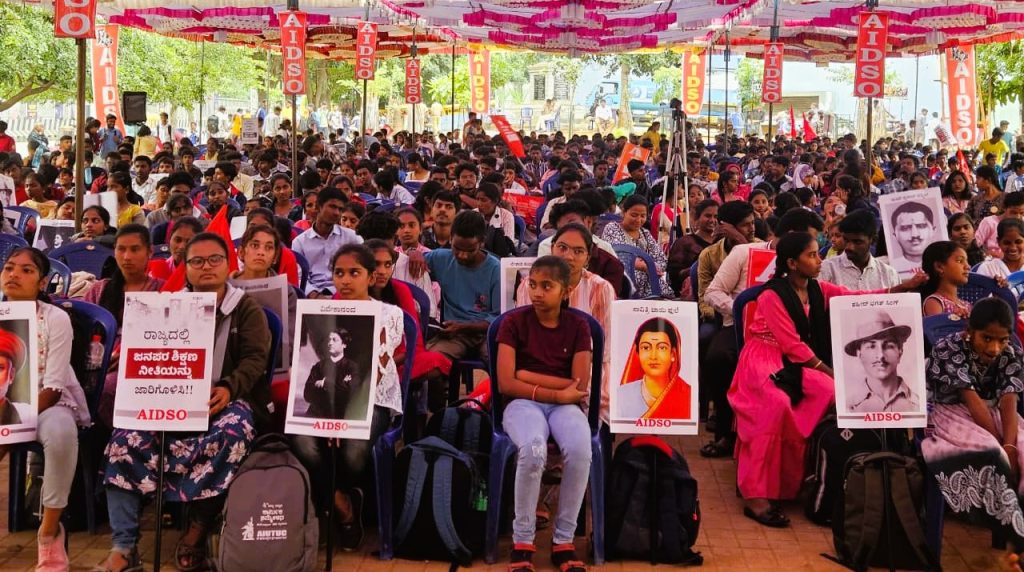
The formal act of submission saw Smt. Anita Nazare, Director of the Primary Education Department, accept the 50 lakh signatures and a detailed memorandum on behalf of the government. This physical handover symbolized a citizen’s audit being officially received by the state.
The mammoth gathering at Freedom Park, supported by messages from figures like writer Prof. Dr. Baraguru Ramachandrappa and actor Kishore, sent an unequivocal message. The students of Karnataka have not only forced a political concession but have also shifted the narrative. The question is no longer about how to close schools, but how to save, fund, and strengthen them. The ball is now in the government’s court to translate this massive public mandate into concrete, transformative action.
![]()

